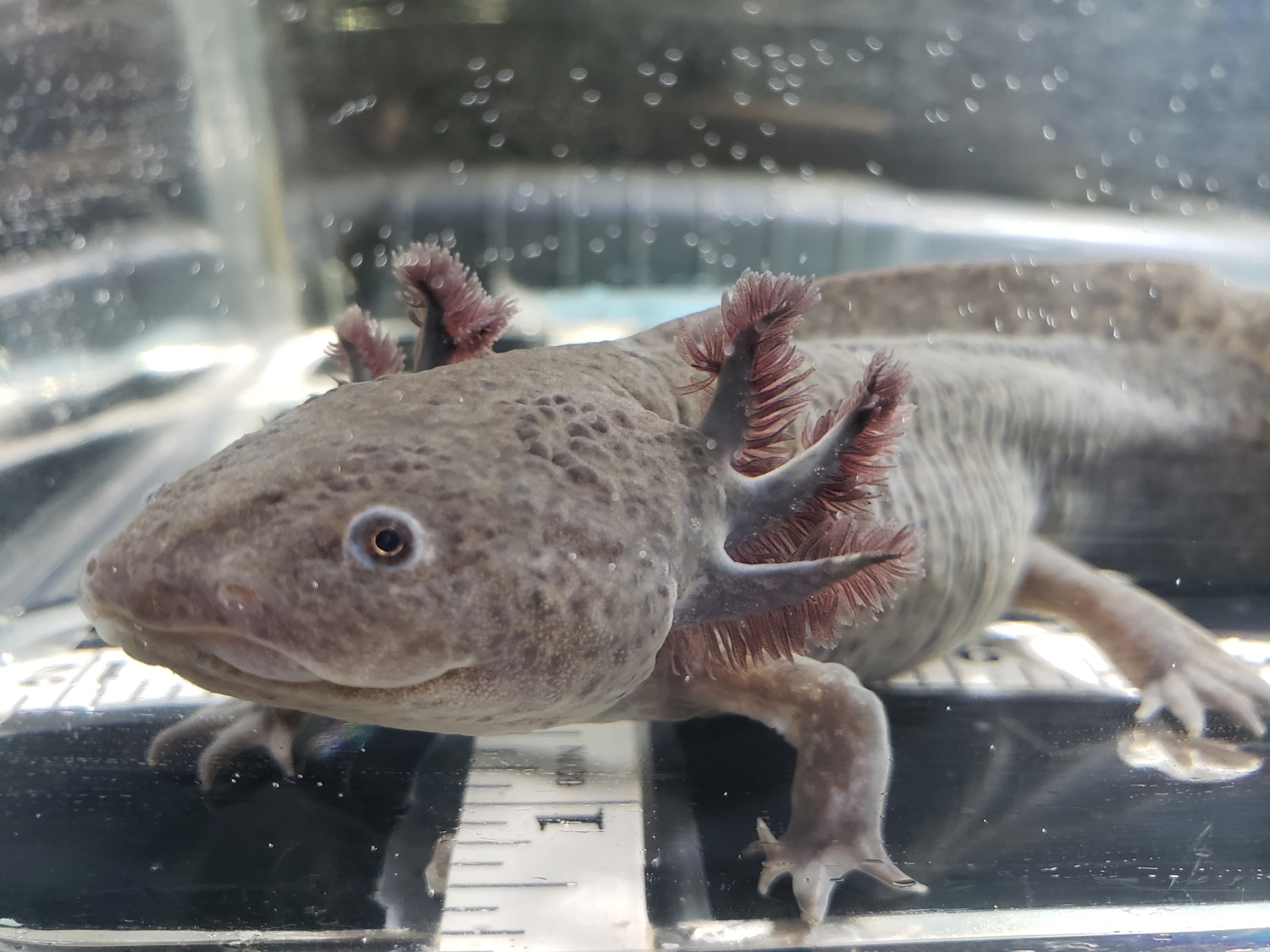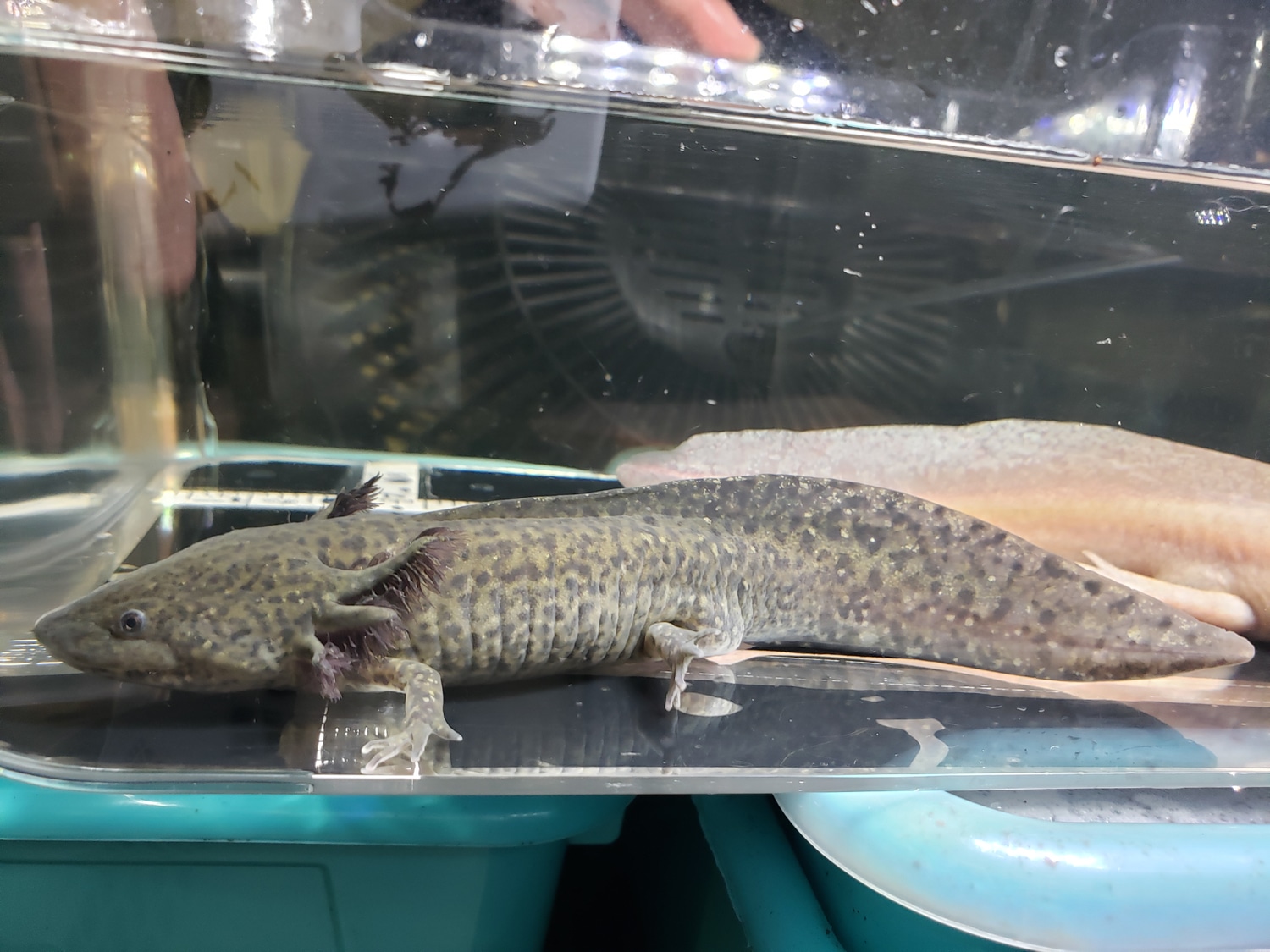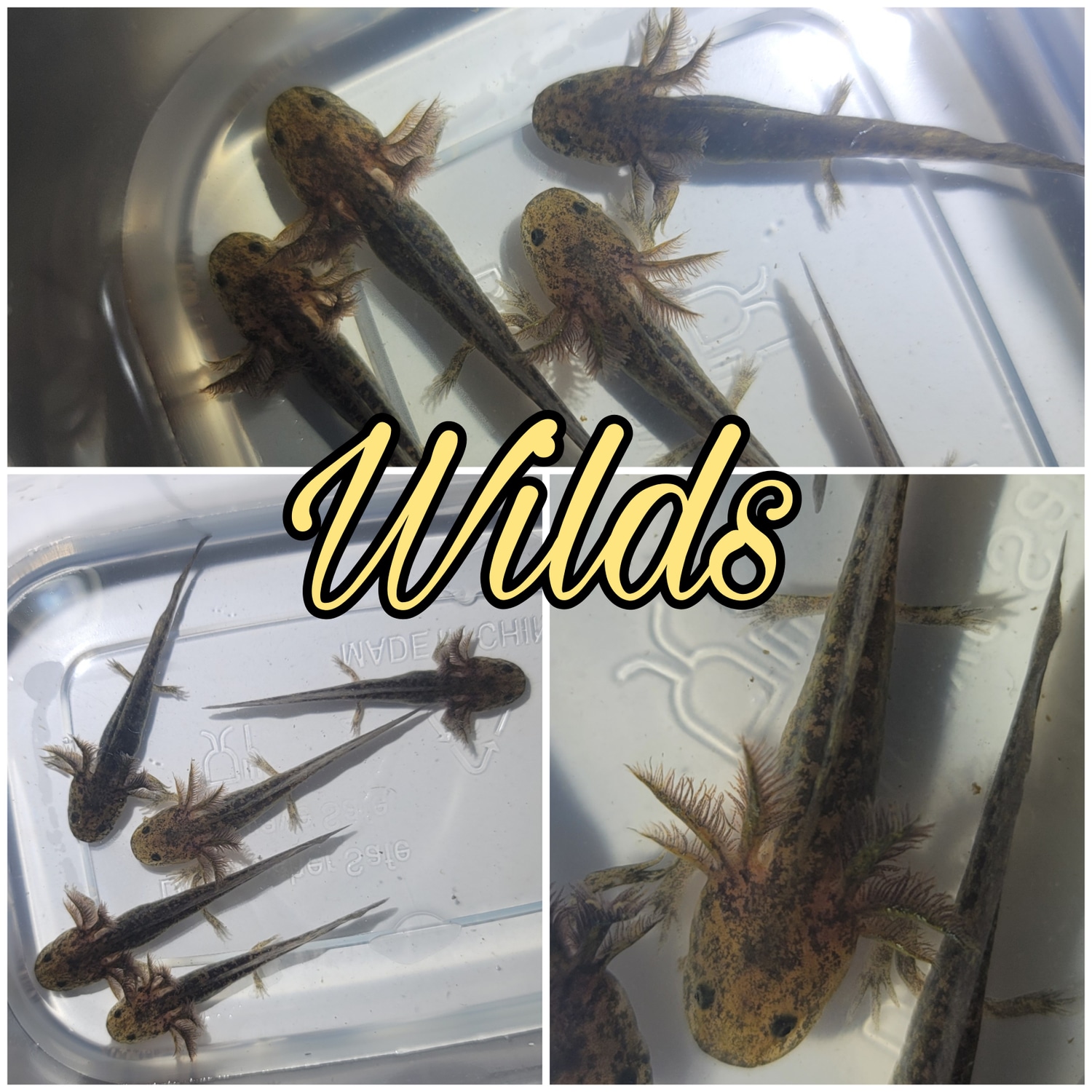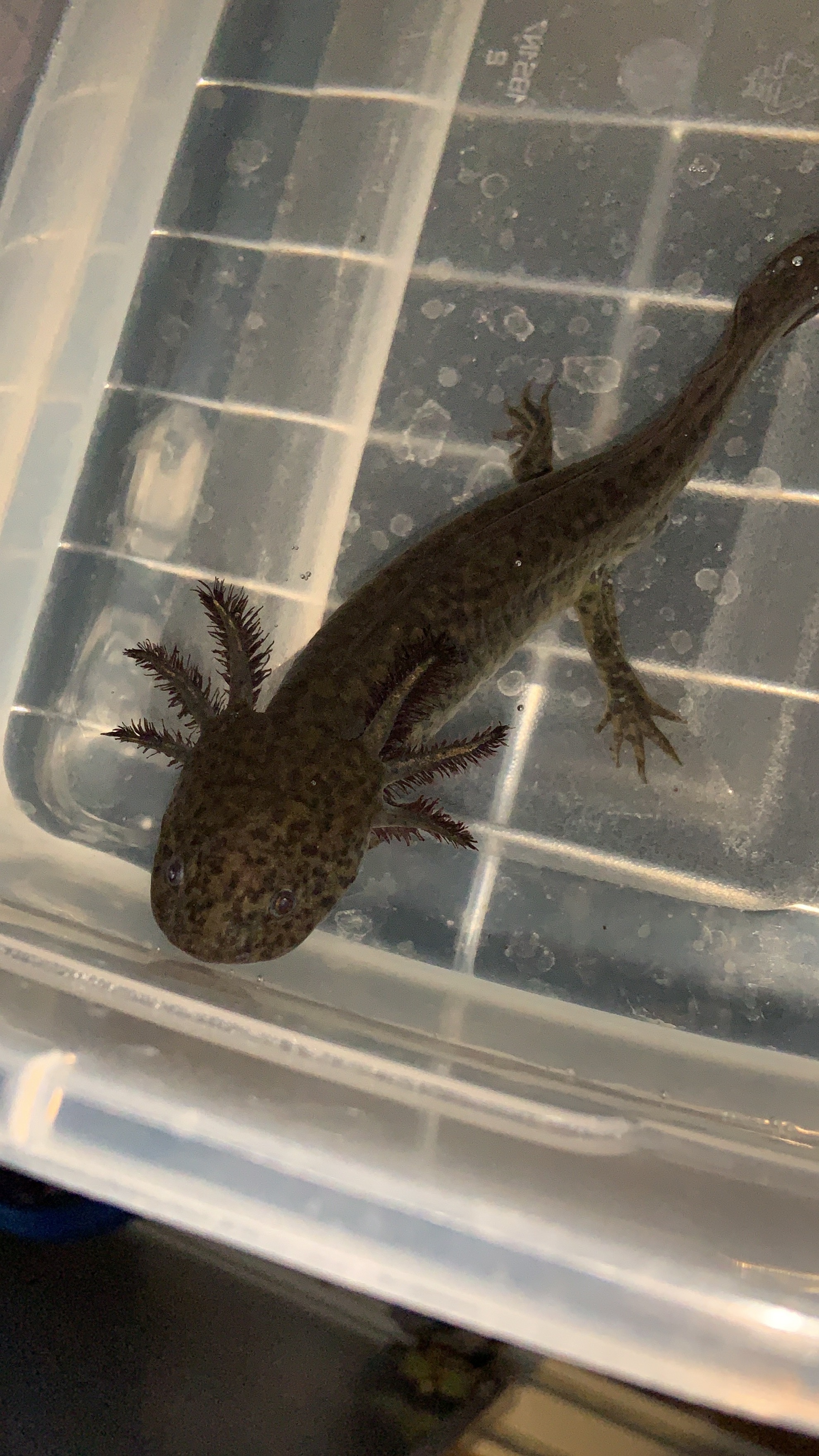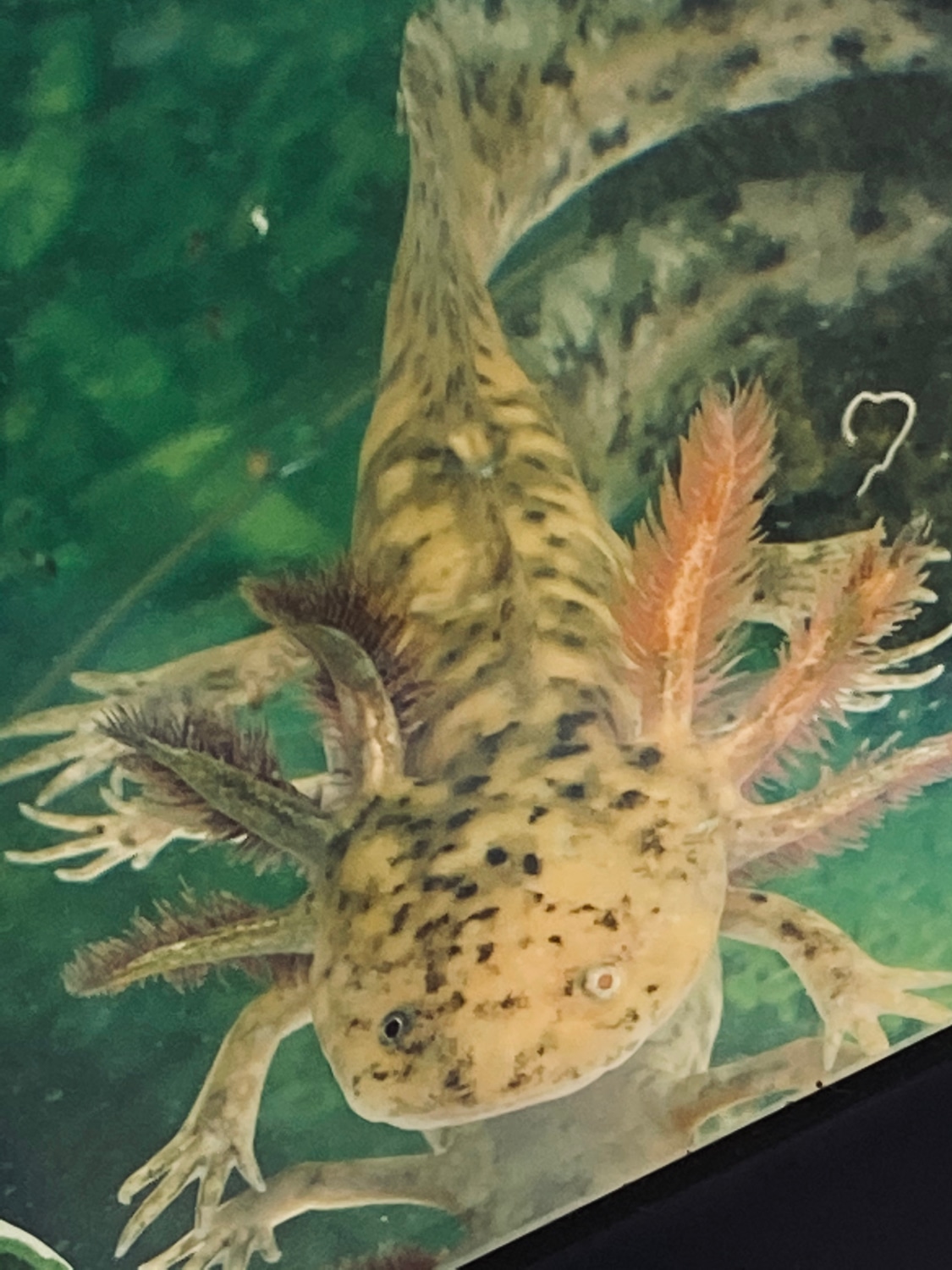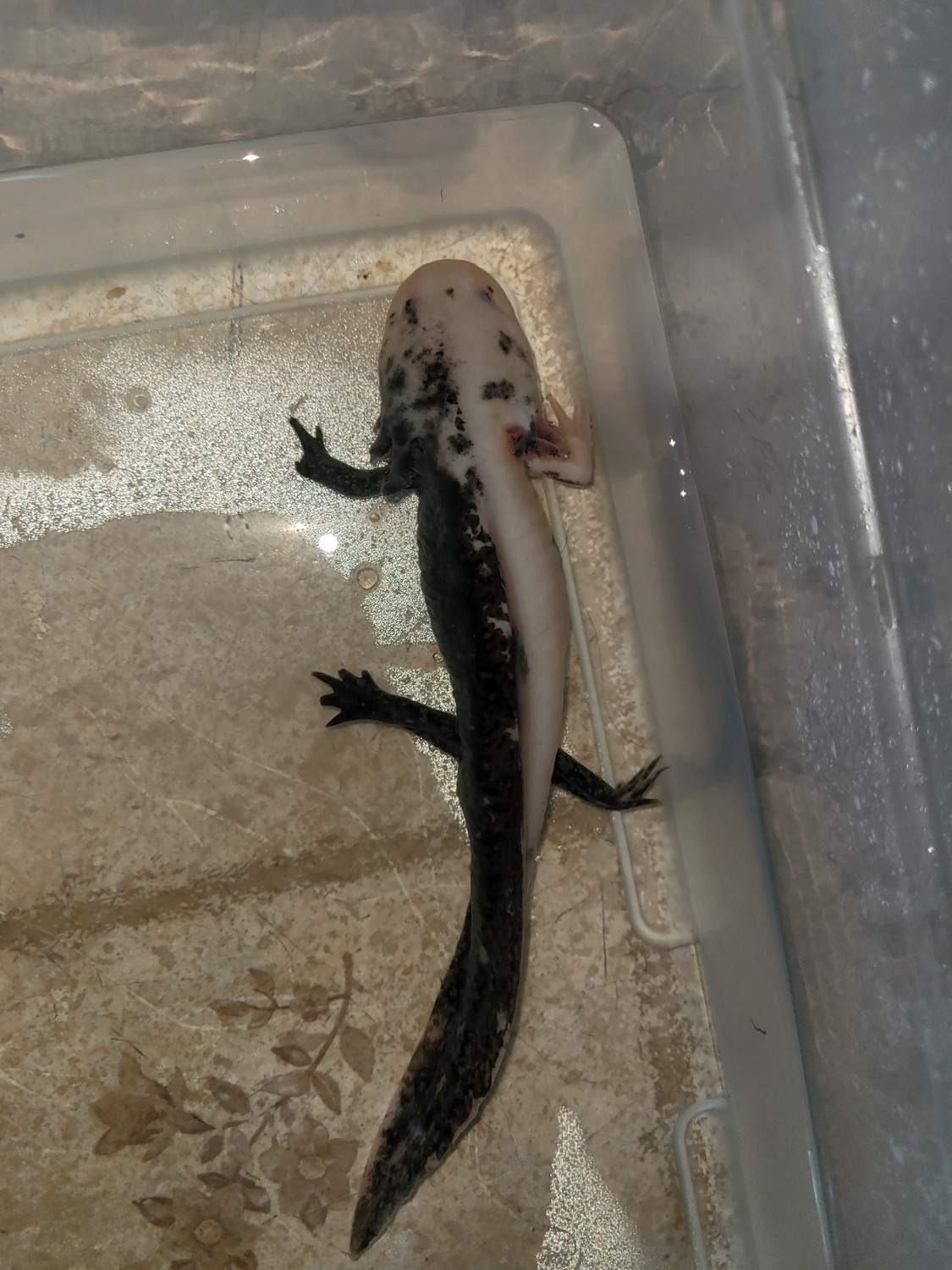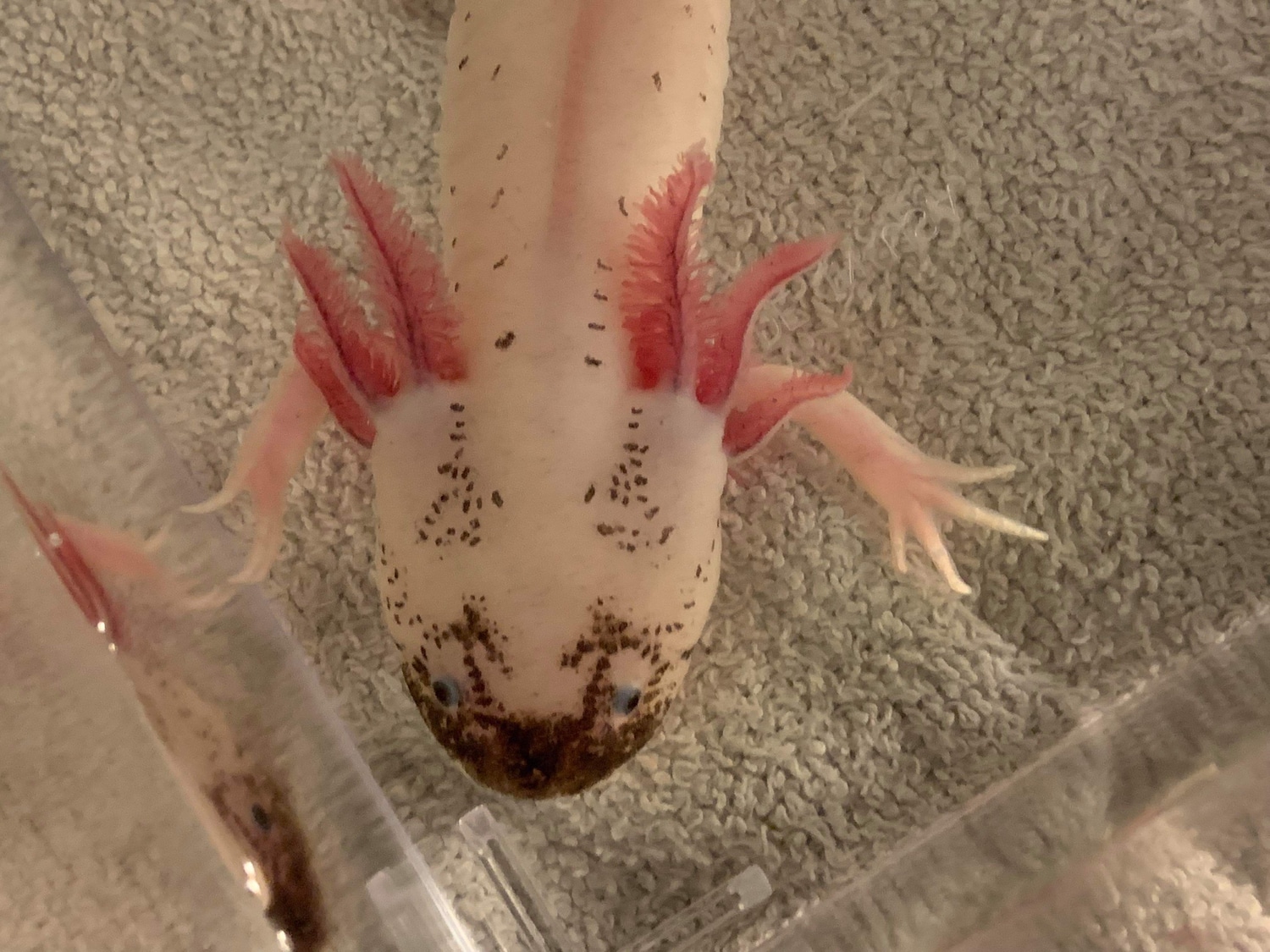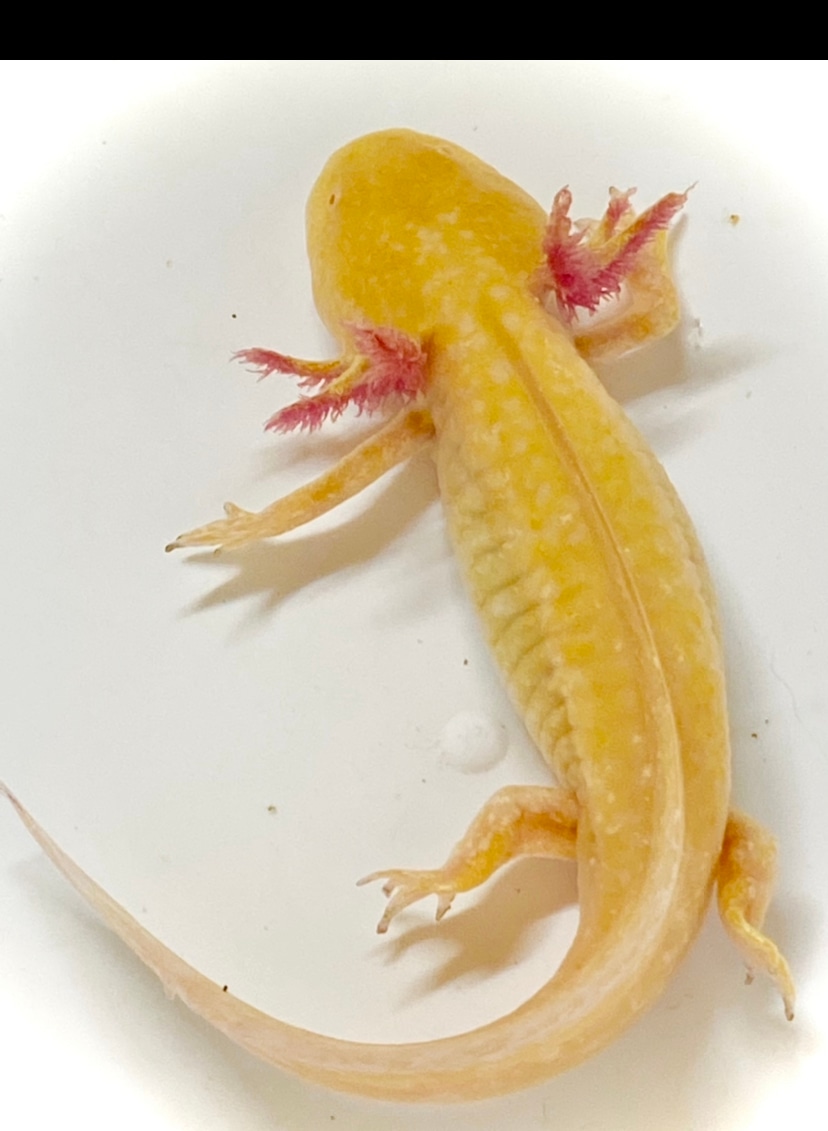Normal
Type: Other
Aliases: Wild, Classic, Ambystoma Mexicanum, Mexican Walking Fish
Issues: N/A
First Produced In: Unknown
Availability: Average
Last Updated: 2022-03-24
Do you have any suggestions or corrections for this article?
Click here to contribute feedback
About
By definition, a “wild-type” has the dominant genes at all of these loci. In other words, a “wild type” has NO recessive features. [1]
Axolotls have 4 (or more) genes for coloration. Wild type means they are either homozygous for the wild coloration or heterozygous for one wild allele and one mutant allele (theoretically, all colors other than wild type originated from a mutation at some point).
D is dark, M is non-melanoid, A is non-albino, and AX is non-axanthic. The D gene makes them dark obviously, with brown/black coloration. The M gene is associated with iridophores, which make them iridescent or shiny. The A gene is associated with true albinism, a lack of pigment, not just white bodies and pigmented eyes like a leucistic. The AX gene is associated with xanthophores, which has to do with yellow and red coloration.
A wild type axolotl is either homozygous or heterozygous for the dominant version of each of those 4 genes. D/D or D/d, M/M or M/m, A/A or A/a, and AX/AX or AX/ax. [2]
Axolotls have three different kinds of pigment cells or “chromatophores” that each produces a different color. Iridophore, Xanthophore and Melanophores. [3]
Axolotls are easy to study because they survive easily and have very large cells. The cells have different pigmentation so they are easier to keep track of than human cells, which are more difficult to distinguish from each other. They are used as models for development and cancer. One challenging aspect in using it for research is its large genome size, which is about ten times as large as a human genome. The salamanders have already contributed to many important scientific discoveries, such as how cells and organs function and develop in vertebrates, the causes of spina bifida in humans, and the discovery of thyroid hormones. That last discovery is particularly interesting. Researchers in the 1920s fed axolotls thyroid tissue from livestock animals. The hormones cause the axolotls to “grow up” and lose their gills and larval skin. Axolotls occasionally mature on their own as well. [4]
History
In science:
Maybe surprisingly, at first the axolotl was distributed across Europe without being tied to specific research questions, and amateurs engaged in acclimatization and aquarium movements played an important role for the rapid proliferation of the axolotl across the continent. But the aquarium also became an important part of the newly established laboratory, where more and more biological and medical research now took place. Early scientific interest focused on the anatomical peculiarities of the axolotl, its rare metamorphosis, and whether it was a larva or an adult. Later, axolotl data was used to argue both for (by August Weismann and others) and against (by e.g., Albert von K€olliker) Darwinism, and the axolotl even had a brief history as a laboratory animal used in a failed attempt to prove Lysenkoism in Jena, Germany. Nowadays, technical developments such as transgenic lines, and the very strong interest in stem cell and regeneration research has again catapulted the axolotl into becoming an important laboratory animal. [5]
These axolotls darken over time. This helps them to maintain camouflage underwater and protect them from predators. The shiny speckles all over the body help differentiate the wild type from the melanoid. [6]
They are native to Lake Xochimilco and Lake Chalco, however these lakes do not exist anymore. Mexico City was built on top of them and they were mostly drained. All that remains of the Xochimilco are canals, which are now the only suitable habitat for axolotls. [7]
Appearance
Head
This Axolotl usually has dark eyes with a shiny gold ring around the pupil and purple/gray gills. [8]
Body
Wild type axolotls are dark grayish green with black and olive mottling. They also have speckles of gold from the iridophores.
Depending on the individual, wild axolotls may be nearly black, gray, or a lighter yellow-green. This morph has purple gill filaments and dark eyes with golden irises. Their coloration allows them to blend into the muddy lakebeds near Mexico City.[9]
Axolotls look different from most other salamanders because they are neotenic. This means that even when they become adults, they keep the traits usually only seen in juveniles; they keep their gills and live in the water their whole lives. In contrast, most other salamanders lose their gills and live on land. [10]
Belly
Normals have a pale belly.
Proven Lines
No known proven lines
Related Traits
Axolotls are very closely related to Tiger Salamanders (Ambystoma Tigrinum) and many axolotls in captivity have been interbred with tiger salamanders. So they are so closely related that they can produce viable offspring together. However, unlike axolotls, tiger salamanders mature and then live on land. [11]
